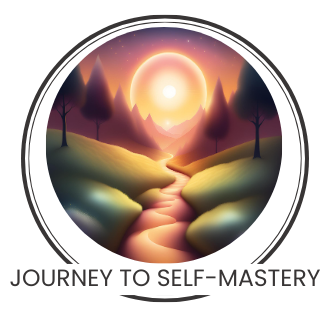 Journaling isn’t just writing down what you did each day. It’s more about creating a space where your mind can untangle emotions and thoughts. Think of it as a conversation with yourself where you can be completely honest and open, no strings attached.
Journaling isn’t just writing down what you did each day. It’s more about creating a space where your mind can untangle emotions and thoughts. Think of it as a conversation with yourself where you can be completely honest and open, no strings attached.
Wait a minute……. As my mother used to say to me as a child….”Truth Time!”
I have a confession.
I resisted journaling for years!!!! I read all the self-help stuff and psychological studies and reports showing how helpful and therapeutic journaling could be but I just didn’t see the value. I’d try it for a few days….then stop. Then I’d start up again….and stop. The main reason was impatience. I wanted to see results right away. I wanted to write down my thoughts, wait 30 seconds, and then get my “a-ha moment” with crystal clear insight into my myself and whatever issue I was dealing with. I learned journaling doesn’t work that way. I learned that the value of journaling comes from a consistent practice when you can review your entries over time and see trends and patterns. But that takes patience. Something I am still working on and should probably journal about later today!!!
Anyway, getting into journaling might feel weird at first if you’re not used to putting your feelings on paper. But trust me, it’s like peeling an onion—layer by layer, you get deeper into understanding what’s really going on inside your head. Once you make it a habit, you start noticing patterns in your mood and reactions. Suddenly, things that seemed complicated become clearer.
The big question is: Why try to understand your emotions? Well, understanding what makes you tick is a game-changer for your mental health. The more in tune you are with your feelings, the better you can navigate stress, improve your relationships, and make decisions that align with what you really want.
Journaling works because it bridges the gap between your conscious and subconscious mind. Writing is slower than talking or thinking, so it forces you to process emotions more deliberately. This increased awareness enhances your emotional intelligence and helps create a toolkit for handling life’s ups and downs.
It’s not about having perfect grammar or structure. Your journal is a judgment-free zone where spilled ink or digital scribbles lay the foundation for better self-awareness. Each entry adds to your growing understanding of personal emotions, setting the stage for healthier mental well-being.
Techniques for Understanding Feelings Through Journaling
Getting a handle on your emotions? Journaling is like your personal GPS. You’re navigating the busy map of your mind, finding shortcuts you never knew were there. Let’s get practical about how to do it right.
Start by setting aside a quiet time where distractions are out of sight. This is your moment. Grab your journal and just write. It doesn’t matter where you start—what matters is that you start. Some folks feel more at ease writing first thing in the morning, while others prefer unwinding at night. Choose what fits you best.
To capture your true emotions, try free-writing. Set a timer for ten minutes and jot down whatever comes to mind. Let your stream of consciousness flow without worrying about making it sound pretty. You’ll be amazed at what surfaces when you’re not focused on sounding smart or deep.
Introduce prompts to your journaling sessions to probe a little deeper. Ask yourself open-ended questions like ‘What am I feeling right now?’ or ‘What triggered my reaction today?’ These prompts help guide your thoughts, turning vague feelings into specific insights that are easier to tackle.
Reflective journaling is another handy tool. This involves revisiting older entries to spot patterns or recurrent themes. Maybe there’s a particular day of the week that’s always stressful, or a certain situation that hits a nerve. By identifying these triggers, you’re already halfway to addressing them.
Most importantly, remember: it’s your journey, at your pace. There’s no pressure to produce profound insights every time you write. Sometimes, even understanding you’re confused about something is progress. That acknowledgment is the first step towards figuring things out.
Journaling to Release Repressed Emotions
Emotions can be tricky, especially the ones we stuff down and ignore. These repressed feelings don’t just vanish; they have a way of influencing our thoughts and actions. Journaling can be a powerful tool to access and release these hidden emotions, allowing you to understand and process them better.
Think of your journal as a safe space where you can unpack unwanted baggage without fear of judgment. It’s a bit like opening a pressure valve. Once you start writing about what troubles you, the act itself can release tension and bring relief.
A useful technique is to write letters that you’ll never send. Address these letters to people, circumstances, or even to yourself. Put down everything you wish you could say without holding back. This exercise helps in acknowledging feelings that you’ve buried because they were too scary or painful to confront directly. This technique has been particularly helpful to me.
Visual journaling can also do wonders. Sometimes words alone aren’t enough. Doodle, sketch, or even make a collage that represents how you feel. This method can bypass your usual defenses, letting deeper insights come to the surface.
Another method is to identify where you feel blocked. Start with phrases like ‘I’ve been holding back…’ or ‘I’m afraid to admit…’. Let your writing unravel these knots. Over time, you might notice a shift as you release pent-up emotions, bit by bit.
Remember, this process is about healing at your own pace. Releasing repressed emotions isn’t a one-time deal. It’s ongoing, and each journaling session is a step towards clearing mental clutter and finding emotional freedom.
Regulating Emotions with Structured Journaling
Journaling isn’t just about expression; it’s also a tool for keeping emotions in check. When feelings can sway you like the wind, structured journaling provides a bit of ballast.
Start by setting a routine that integrates journaling into your daily life. Don’t worry about having to write a certain amount every day. A few minutes jotted down in your notebook can make a huge difference in how you process your emotions.
Consider trying gratitude journaling. It’s as simple as listing a few things you’re thankful for. This practice has a sneaky way of steering your mind towards positivity, helping to balance out the emotional highs and lows.
Introduce mood tracking into your journal habit. Record your emotional state each day with a word or two. Over time, you’ll spot patterns in your mood, helping you anticipate and prepare for emotional dips.
Another technique is to use bullet points to organize events and feelings from your day. This approach helps prioritize thoughts, providing clarity and preventing emotions from being overwhelming.
Writing isn’t just reactive— it can also be preventative. By regularly checking in with yourself, you become better equipped to notice when you’re out of sync. With structured journaling, dealing with emotions isn’t just about surviving—it’s about thriving.
Boosting Emotional Intelligence with Journal Prompts
Ready to kick things up a notch with journaling? Journal prompts are your secret weapon for boosting emotional intelligence. They’re designed to gently nudge you towards self-discovery, encouraging you to look at your feelings from fresh angles.
Think of prompts as gentle guidance to explore layers of your emotions you might not be aware of. Ask yourself, ‘What did I learn about myself today?’ or even, ‘What emotion am I avoiding?’ These questions provoke thought and often lead to insights you weren’t expecting.
Customizing your own prompts is a great way to make journaling even more personal. Start with what you’re curious about or what feels unresolved. Maybe inquire, ‘How did I react to stress today, and why?’ This approach tailors the journal to fit your unique journey.
Creativity is key when it comes to prompts. Mix things up by using quotes, songs, or even news headlines to spark an entry. Each new angle provides an opportunity to explore emotions differently, making the process both engaging and enlightening.
Consistent engagement with these prompts doesn’t just expand your emotional vocabulary—it nurtures a heightened awareness of your emotional world. By using journaling this way, you’re not just recording your thoughts; you’re actively participating in your emotional growth journey.

This is an excellent post on using journaling as a tool for understanding emotions! I love how you’ve broken down the benefits of journaling and provided practical tips for getting started. From my own experience, journaling has been a powerful way to process emotions and gain clarity during challenging times. Your suggestions on writing without judgment and allowing yourself to be open with your feelings really resonate with me, as it helps to release pent-up emotions and gain a deeper understanding of oneself.
One question I have is: How do you stay consistent with journaling, especially when emotions feel overwhelming or hard to express? I’ve found that it can be difficult to keep up with journaling when I’m feeling down, so any advice on staying motivated during tough times would be great. Additionally, do you recommend using prompts, or is free writing more effective for exploring emotions?
Overall, this post provides valuable tips for anyone looking to use journaling as a way to better understand and manage their emotions. It’s a simple yet powerful tool for personal growth, and I’m excited to implement some of your advice. Thanks for sharing such helpful insights!
Journaling is such a powerful tool for self-discovery, and your perspective on patience really resonates! It’s easy to want immediate clarity, but the real magic happens over time as patterns emerge. I love the idea of using prompts to dig deeper—sometimes just asking the right question can unlock so much insight. Thanks for sharing your journey with journaling; it’s a great reminder that self-reflection is a process, not a quick fix!